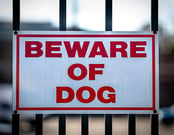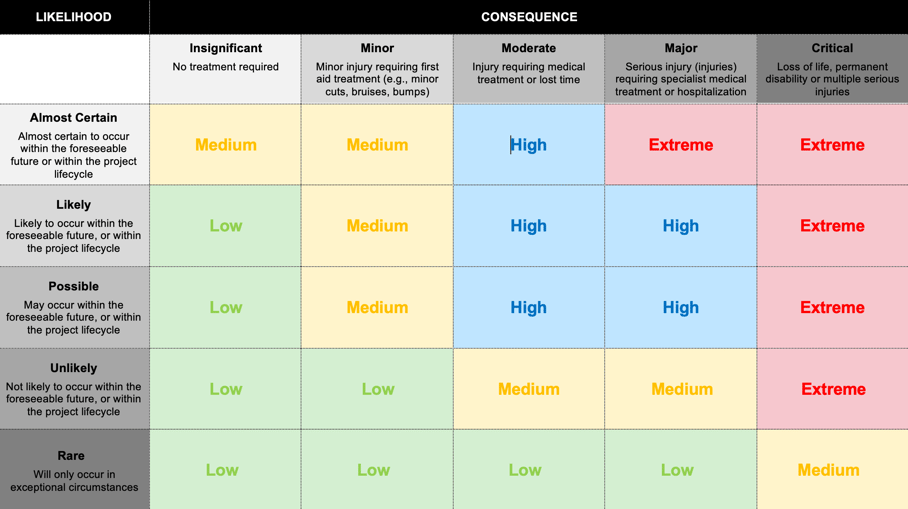Randall Arms is a seasoned safety professional with a 15-year career dedicated to process safety and worker empowerment. He has a rich history of managing safety processes to facilitate the implementation of best-in-class safety initiatives within companies for their lone worker programs. His comprehensive approach ensures both employee well-being and operational excellence across diverse workplace environments. From his roots in the fire service, Randall evolved through distribution and ground-level Environmental, Health, and Safety (EHS) roles in manufacturing. Notably, he held positions at Mohawk Industries, Bridgestone, and Gibson Brands, culminating in his role as Global EHS Manager. Randall joined Blackline Safety in 2021 and is now the Channel Operations Manager for North America. His dedication to people and safety initiatives ensures every worker safely leaves the workplace.
Workplace Violence and Lone Workers
Randall Arms, Channel Operations Manager
March 06, 2024
Strategies to Get Ahead of a Rising Risk
Lone workers, due to the nature of working alone without access to others, are highly vulnerable. One of their biggest threats comes from violence in the workplace. According to a joint study conducted in 2022 by the Bureau of Justice Statistics (BJS) and the Bureau of Labor Statistics (BLS) and the National Institute for Occupational Safety and Health (NIOSH), 1.3 million nonfatal violent crimes in the workplace occurred annually between 2015 and 2019.
This article breaks down the types of workplace violence, its impact, preventative measures employers can take, and how to conduct a thorough assessment of the risks to your workers.
|
|
DID YOU KNOW? |
The Four Types of Workplace Violence
Workplace violence manifests in four primary forms:
- Criminal intent —by way of robbery or assault. Lone workers, particularly in sectors like retail or service, are particularly susceptible to theft or physical attacks by strangers entering their workplace.
- Customer or client-related violence —wherein escalating interactions between lone workers engaged in direct customer service can lead to verbal abuse or physical aggression.
- Worker-to-worker violence —within the workplace itself as lone workers, even in isolation, might experience harassment or bullying from colleagues, and conflicts among coworkers can balloon into violent incidents.
- Personal or domestic violence —most often perpetrated by individuals external to the workplace. Such incidents are alarmingly common as abusers may target their victims, who are lone workers, leveraging knowledge of their precise location during work hours.
 |
Lone workers may be at risk of assault by animals when doing residential service calls or when working in remote, outdoor locations with wildlife present. Read a real-life incident: Sasha’s Story – Meter Check Turns Dangerous |
The Impacts of Workplace Violence
Unsurprisingly, work-related violence takes a significant toll, both physical and mental, on the individuals directly involved and bystanders who may witness such incidents. The impacts include injuries, feeling insecure and unsafe, stress and the development of mental health conditions, and in the most severe cases, disability or even death.
Beyond the immediate physical harm, the enduring effects of serious or persistent verbal abuse and threats can profoundly affect a worker's mental health. The repercussions also extend to employers, contributing to increased staff sickness, diminished morale, and a tarnished reputation, complicating recruitment and staff retention efforts.
The aftermath of workplace violence may also result in additional costs, including higher insurance premiums and compensation payments.
Preventative Measures for Employers
The multifaceted nature and impact of workplace violence underscores the importance of proactive measures to address and prevent such occurrences. Employers have a crucial role to play. Aim to include these core components in a safety program that protects your lone workers from workplace violence.
- Establish a workplace violence prevention plan: outlining the organization’s commitment to maintaining a safe and respectful workplace, with supporting definitions of workplace violence, roles and responsibilities, reporting procedures, training and investigative procedures.
- Employee training: providing comprehensive training to employees on recognizing and responding to workplace violence can empower them to take appropriate actions.
- Safe work environment: prioritizing creating a safe work environment with measures such as enhanced security, well-defined protocols, and conflict resolution training contribute to a secure atmosphere.
- Leverage monitoring technology: providing cloud-connected lone worker wearable safety devices, paired with 24/7 live monitoring of alerts, is proven to reduce the risks to workers, according to recent research from the National Safety Council. These devices ensure your safety status and location are always known to monitoring personnel. Devices also usually have a manual emergency SOS, so workers can silently and discreetly call for help in the event of an incident, alongside push-to-talk and two-way voice capabilities.
- Prompt incident response: establishing clear procedures for reporting and addressing workplace violence incidents. Swift and effective response mechanisms enable a proactive approach to prevent future incidents.
Know the Risks
A comprehensive evaluation of the potential situations that may result in harm to your lone workers—and implementing measures to avert or mitigate them—is foundational to protecting your people from workplace violence. This evaluation is not a one-time affair, but a continuous process that adjusts to the changing dynamics of the workplace and emerging threats.
Aim to include these five elements in your lone worker risk assessment checklist:
1. Hazard Identification: identify all the occasions that your people work alone and the personal safety risks that may arise. For example, is there a risk of confrontation with potentially agitated members of the public? What challenges might exist with emergency communications and ability to exit from the situation?
2. Likelihood of Risk: prioritize the hazards that you’ve identified so you can focus more of your resources on hazards that are potentially more harmful and more likely to happen. Using a risk matrix helps you prioritize which hazards need immediate attention.
This risk assessment matrix template can help.
View Risk Assessment/Matrix template: Risk Assessment Template

 Source: https://www.researchgate.net/figure/Risk-assessment-matrix_fig2_311331773
Source: https://www.researchgate.net/figure/Risk-assessment-matrix_fig2_311331773
Once you have decided whether you are going to act, ask yourself whether the hazard can be eliminated entirely or whether you can control the risk so that harm is unlikely.
3. Cost and Complexity: for the hazards that require risk mitigation you’ll want to know the difficulty of implementing the mitigation solution and its potential price tag. In some cases, risks in the “extreme harm/almost certain to occur” category can be relatively straightforward to address. For example, you might deem that lone worker safety monitoring technology that automates the process of watching out for your most vulnerable personnel is optimal. These solutions range from budget-friendly to white glove. At this point, your company will need to set a budget to invest in a safety solution.
Effort vs Impact Scale example:
4. Policies, Processes, and Procedures: determine if any corresponding change management programs or changes to operating protocols are required as a result of your hazard mitigation. This may involve training workers on how to use connected safety wearables or new practices relating to the work being performed. Establish protocols and schedules to ensure that every worker receives the appropriate training, and managers can monitor employee progress effectively. Once the new protocols are in place, check in regularly to ensure the new procedures are being carried out. Use the Plan Do Check Act (PDCA) cycle to help implement the change and foster continuous process improvements. Some action items can include:
- Follow-up with supervisors to make sure their employees are following the procedure.
- Ask for feedback on what’s working and what is not and adjust accordingly.
- Continue to update the risk mitigation protocols based on feedback, as well as new risks encountered.
5. Record Your Findings: put your most significant findings in writing, sharing prioritized hazards along with how risks will be controlled. Avoid technical jargon and consider creating a simple rating system to clearly indicate the level of risk involved in a certain job — this could be numerical, for example, or color-coded. Fine-tune this document to create your lone worker safety policies and procedures. Run your policies and procedures past managers, lone workers and other key stakeholders in the company to make sure you’ve properly addressed important issues. Celebrate your successes to foster deeper compliance within your organization.
Navigating workplace violence for lone workers requires a proactive and holistic approach. By conducting thorough risk assessments, implementing preventative measures, and fostering a culture of safety, employers can create a safe environment for all their people.
Get In Touch
Let’s start a discussion about your safety challenges and needs.
Related Blog Posts
Real-Life Incident: Mason’s Story — High H2S Exposure
November 25, 2025
“Shortness of breath. Request EMS to the location.” How Real-Time Gas Detection Led to a Quick Save Exposure to toxic gases can go from a strange...
Real-Life Incident: Gerry’s Story: Alone in the Boiler Room With CO
October 21, 2025
When a routine patrol became a potential gas poisoning tragedy, quick action and life-saving technology made all the difference. It was a routine...
Real-Life Incident: Brian’s Story - Containing a Texas Brush Fire
August 26, 2025
How quick action stopped a blaze from spreading, safeguarding nearby neighborhoods In a farming community in rural Texas with a population fewer...




